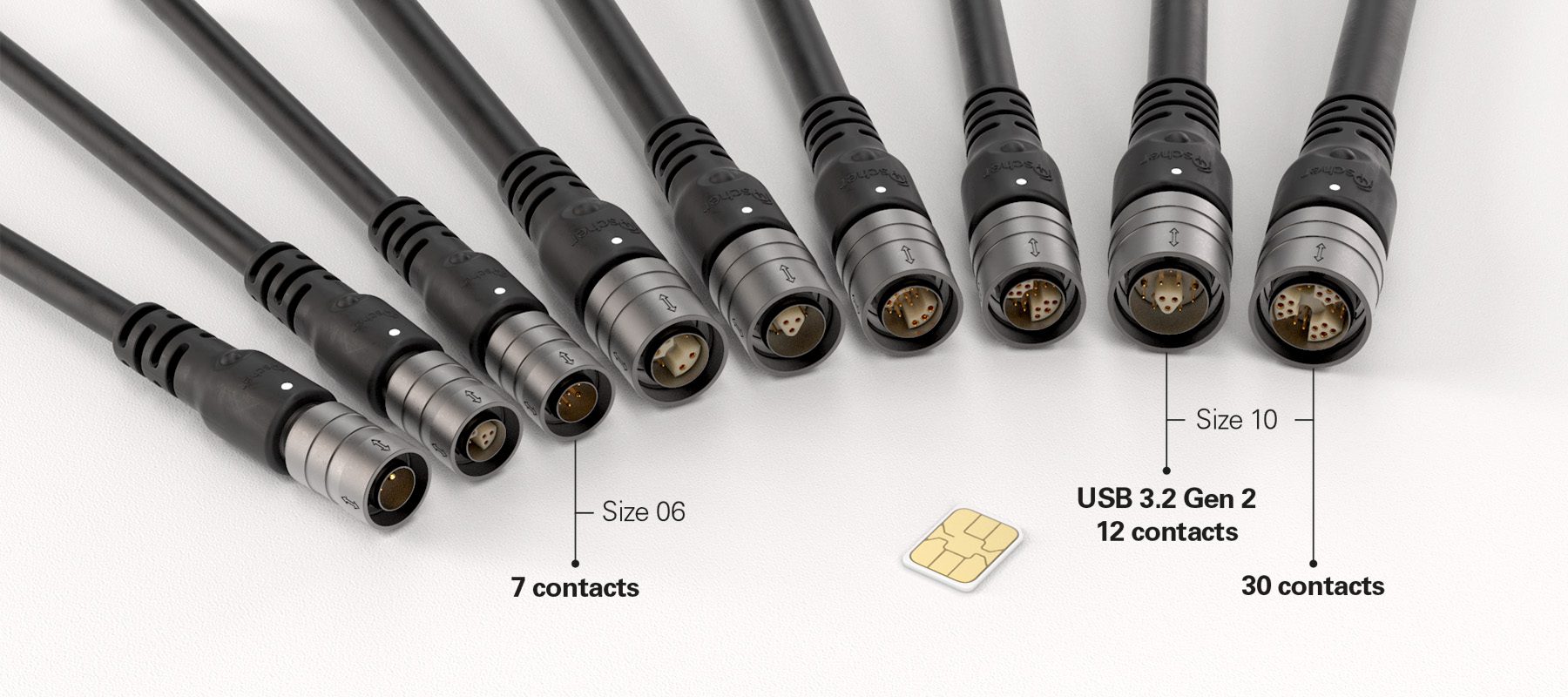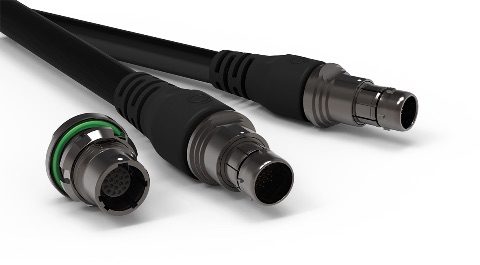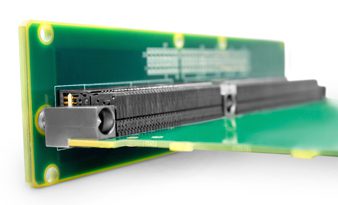Strategic Connector Selection for Unmanned Military Systems
Drones and other unmanned aircraft play a critical role in military operations. Five key attributes guide military and aerospace designers as they specify interconnects for these systems.
The U.S. Army’s vision statement in its 2010–2035 roadmap for unmanned aircraft systems (UAS) begins, “Army UAS employed across all tactical echelons supporting Army and Joint operations provide the warfighter a disproportionate advantage through near real-time situational awareness, multi-role capabilities on demand (including communications, reconnaissance, and armed response), and system employment from dynamic retasking through autonomous operations.” Since then, the U.S. Department of Defense has continuously invested in unmanned systems to capitalize on the many military advantages these technologies provide.

U.S. military personnel performing maintenance on a drone.
UAS are comprised of lightweight, small, and powerful electronic components, including interconnects. These components must meet the necessary military specifications, but military and aerospace engineers should also consider five key attributes when choosing connectors.
1) Size
Size and weight have a direct impact on flight times, ranges distances, and energy use in airborne technologies. Reducing system size has focused on optimizing size, weight, and power (SWaP) characteristics through the strategic selection of components that serve these goals while delivering performance. The current drone market is grouped into five categories based on size.

Current unmanned aircraft systems (UAS) categories. AGL = above ground level. MSL = mean sea level.
When designing a drone that is three feet or less in length, such as the Wasp AE RQ12-A by AeroVironment Inc. or the Coyote by Raytheon, engineers must select connectors capable of providing the highest functionality and performance in the smallest, lightest package possible. The best way to do this is to choose connectors that combine multiple, high-density contact technologies within a single, compact connector housing. For example, Fischer Connectors’ MiniMax Series combines high-speed USB 3.2 Gen 2 and 12 signal contacts in a size 10 shell with an outer diameter of just 14 mm. In addition, the series offers advanced power contacts, a hermaphroditic contact block, and 0.5 mm contacts, and is tested to full S-parameter standards with cables up to 2 m.
2) Security
USB ports are the go-to for data exchange. However, infection and malware from a USB stick can silently infect users’ computers and could pose a serious national security risk if accidentally introduced into a military drone. Security Research Labs found that USB firmware, which exists in varying forms in all USB devices, can be reprogrammed to hide attack code. So, malware capable of spying on and relaying all information from an infected computer could potentially reroute incoming information from an infected drone to an attacker’s DNS server. To enable the continued use of USB ports in military UAS, connector suppliers are developing solutions with enhanced storage and transportation features for secure data. Fischer Connectors’ Rugged Flash Drive has a robust housing designed for use in harsh environments, a unique circular interface for secure data access, and 4GB to 128GB storage capacity, and enables high-speed USB 3.2 transmission in an unbreakable, ultra-portable, lightweight, and miniature design.
3) Durability
Keeping personnel out of harm’s way is an important part of drone implementation. As part of a broader strategy to aggressively combat wildfires, the U.S. Department of the Interior awarded a Call-When-Needed contract to four U.S. companies for small, unmanned aircraft systems services. The contract allows the agency to utilize small drones that are fully operated and maintained by contractors and are ready when needed to support wildfire operations, search and rescue, emergency management, and other resources.
Drones deployed in support of mission-critical operations need to ruggedly withstand a variety of environmental hazards, including shock and vibration, wind, dirt, dust, extreme temperatures, water, ice, and, as is the case for Saildrone, which collects high-resolution ocean data using a fleet of unmanned surface vehicles (USVs), even saltwater. One such solution is Fischer Connectors’ UltiMate series. These compact, lightweight, and extremely environmentally rugged connectors are rated IP68/69 even when unmated, deliver up to 10,000 mating cycles, 1,000 hours of corrosion resistance, 360° EMI shielding, and operate in temperatures extending from -55 °C to +135 °C.
4) Data Speed
The fact that drones are almost exclusively controlled remotely presents some design challenges. Providing the necessary computing power and data collection and distribution capabilities requires ruggedized components that meet stringent size, weight, and power (SWaP) specifications. COTS-based embedded computing technologies and their associated thermal management solutions advance data speeds in drone designs while satisfying the necessary requirements. The two key factors in these designs are reliability in harsh environments and the ability to effectively address both video and storage needs. VPX, formerly known as VITA 46, was introduced to deliver more robust, high-speed performance for data-intensive, high-bandwidth applications. One such solution is Smiths Interconnect’s KVPX connector, which is a shielded, high-speed, high-density, modular interconnect system that is scalable to 10Gb/s. Featuring 0.4 mm Hypertac hyperboloid contact, these connectors provide rugged immunity to shock and vibration fretting, numerous linear paths of contact, and a self-cleaning wipe action, along with low insertion and extraction forces.
5) Protection
Electromagnetic fields are produced by electrically charged objects and can affect the behavior of charged objects in the vicinity of the field. This electromagnetic interference (EMI) can disrupt other nearby electronic devices and can cause equipment performance to degrade. The employment of increasingly high-density digital circuits makes systems more susceptible to noise and interference due to lower level signals and the need for fast rise and fall times. Creating a good grounding plan at the outset can help mitigate future costs and downtime, but it’s often necessary to place shields over components to achieve effective EMI shielding at the PCB or system level. Removable, surface-mounted shield clip components designed to enable rework and circuit tuning are one ideal solution. Autosplice shield clips and covers offer premium RFI and EMR noise suppression in two designs: a standard shield clip with four independent spring contacts and a corner shield clip designed to minimize interference on even the most sensitive devices and are available in low height profiles ranging from 0.8mm to 3.62mm.
As drones continue to become more popular in both the military and commercial markets, the connector industry continues to develop new lightweight, rugged, high-speed, reliable, and secure micro and nano technologies to support these critical technologies.
Visit Kensington Electronics Inc. to see more solutions for UAVs.
Like this article? Check out our other Harsh Environment and High Reliability articles, our Mil/Aero Industry articles, and 2022 Article Archives.
Subscribe to our weekly e-newsletters, follow us on LinkedIn, Twitter, and Facebook, and check out our eBook archives for more applicable, expert-informed connectivity content.










